Steelhead Example
Climate Variables Explain Genetic Differentiation within Steelhead Metapopulations
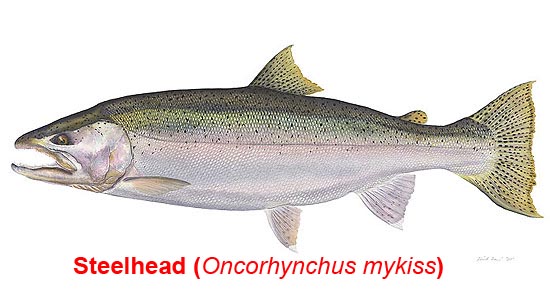
Understanding how environmental variation influences population genetic structure is increasingly important for conservation and management because it can reveal how human-induced global change impacts population connectivity, genetic diversity and persistence. We used riverscape genetics modeling to assess whether climatic and habitat variables were related to genetic differentiation (FST) within each of five metapopulations (79 total populations) of threatened steelhead trout (Oncorhynchus mykiss) in the Columbia River Basin, USA.
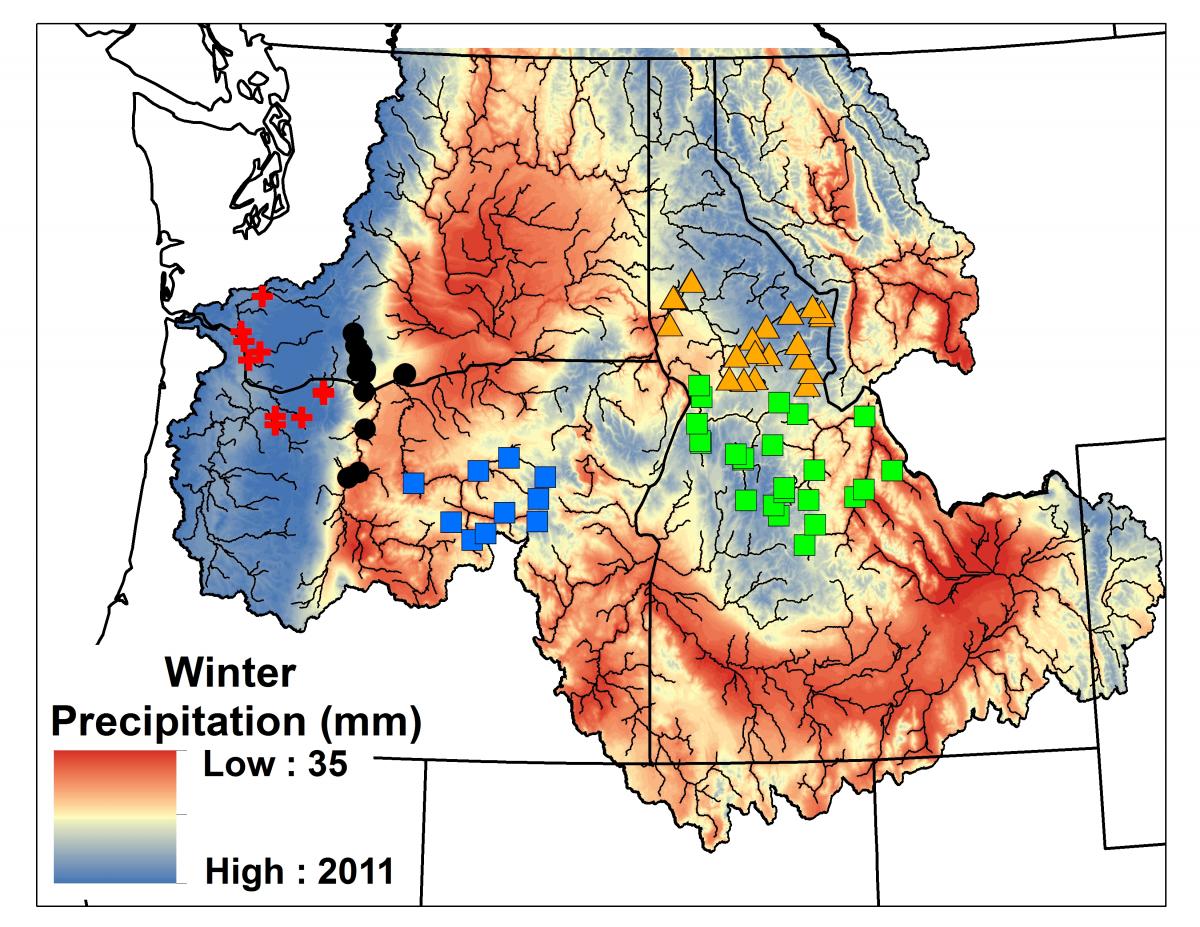
(Above) Map of the five metapopulations (study areas) of steelhead relative to winter populations of steelhead, colored by their corresponding metapopulation (red crosses = Lower Columbia, black circles = Eastern Cascades, blue squares = John Day, brown triangles = Clearwater,green squares = Salmon).
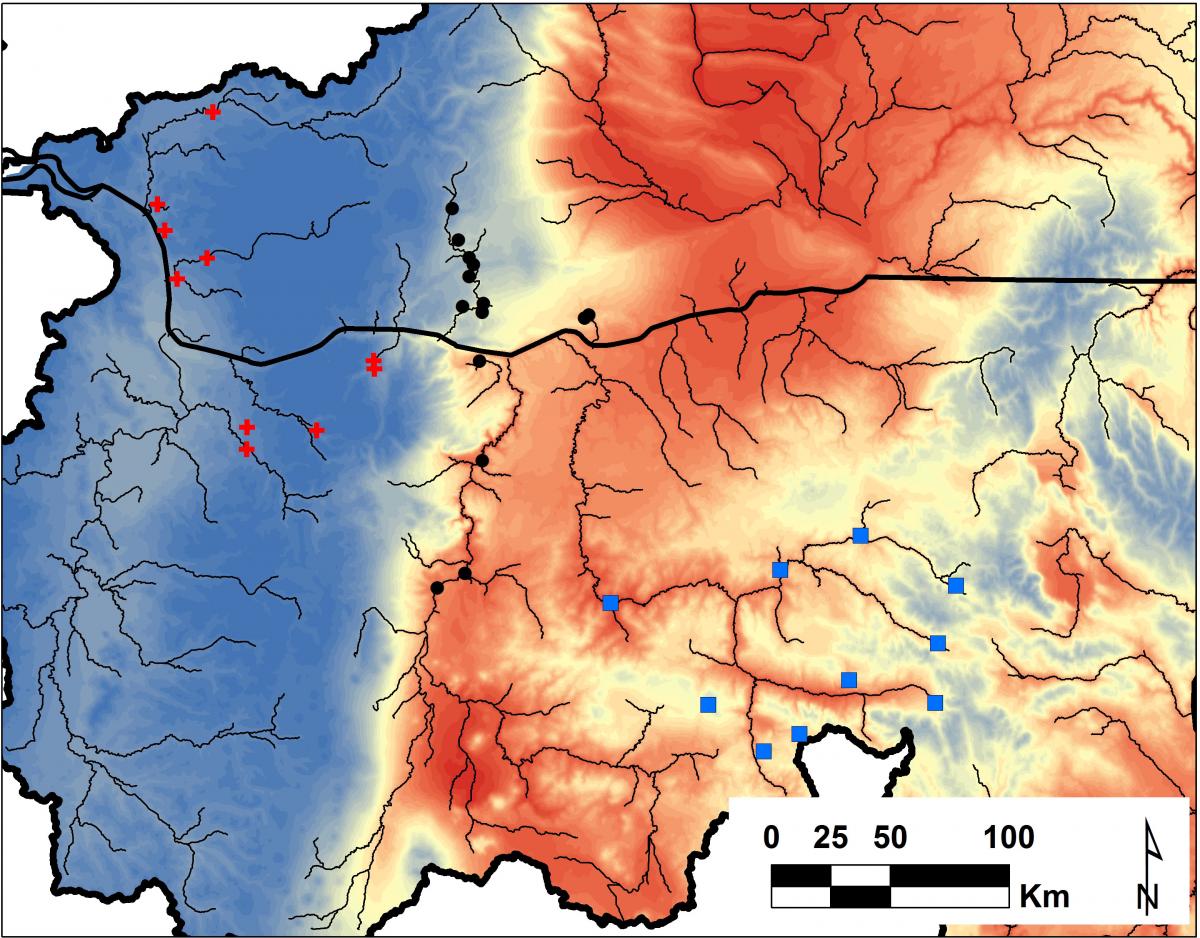
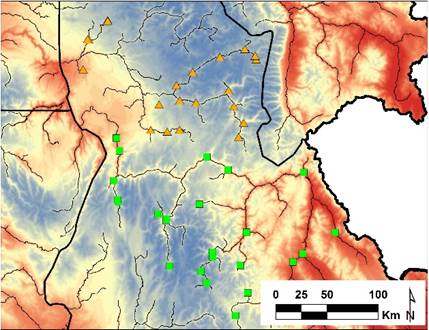
We found that FST was positively correlated with winter precipitation (r=0.63–0.75) and negatively correlated with summer maximum temperature (|r| = 0.53–0.76) within three metapopulations (Salmon, Eastern Cascades and John Day), while the proportion of habitat patch size was positively correlated with FST (r = -0.81) in the Lower Columbia metapopulation.
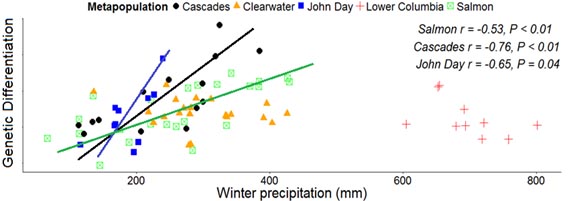
(Above) Scatter plots of genetic differentiation (the average genetic distance between a single population and all other populations) relative to winter precipitation measured for the same population of steelhead. Points represent local populations of steelhead, colored by their corresponding metapopulation from figure 1 (red crosses = Lower Columbia, black circles = Eastern Cascades, blue squares = John Day, brown triangles = Clearwater, green squares = Salmon).
How can this study and information help managers and decision makers?
The information provided in this study can aid conservation through the application of our findings to future vulnerability models where we predict future impacts of climate change on steelhead populations throughout the Columbia River Basin. Often users performing vulnerability assessments must rely on information that is purely speculation or expert opinion. However, our findings can guide users towards including those environmental (climate and landscape) variables that are most influential in impacting genetic diversity. For example, if our models show that increased precipitation will very likely causes certain populations to become fragmented (higher FST) then mangers can monitor more closely for fragmentation (i.e., reduced gene flow and/or reduced local population size) or perhaps manage to prevent fragmentation.
